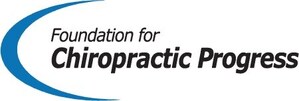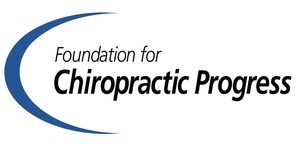SAN JOSE, Calif., Oct. 13, 2021 /PRNewswire/ -- A thought leadership article about reducing healthcare costs by expanding primary care opportunities to include a doctor of chiropractic (DC) was featured in the October issue of The Self-Insurer, the world's leading alternative risk transfer journal and the official publication of the Self-Insurance Institute of America. The article was contributed by the Foundation for Chiropractic Progress (F4CP) and marks the first time an article by the not-for-profit organization was published in the outlet.
"How Broadening The Primary Care Scope Can Lower Costs For Employers," (pages 36-40 of the October 2021 issue of The Self-Insurer) was written by Sherry McAllister, DC, president of F4CP. In the article, Dr. McAllister educates employers on how employees with back, neck, joint, headaches and other types of neuro-musculoskeletal pain should seek care from a DC first instead of another type of primary care doctor, such as a family physician or an internal medicine physician.
Dr. McAllister illustrates the benefits of DCs as primary care doctors, particularly to self-insured employers, who must pay healthcare bills for their employees. For example, Dr. McAllister highlights a workers' compensation study in Texas that found if a worker received at least 75% of their care from a DC, the total cost dropped by nearly one-quarter to $12,202. If the DC delivered at least 90% of the care, the average cost declined to $7,632.
"Not all employers are aware of the significant healthcare cost savings that a DC can help deliver for their business, particularly for employees with higher rates of neuro-musculoskeletal pain and injury such as those in manufacturing, construction and other industrial occupations," said Dr. McAllister. "Reaching these employers through a well-read and trusted journal such as The Self-Insurer will help spread this awareness and hopefully more workers will access the care they need to achieve an optimal outcome and get back to work sooner."
Reducing Costs and Risk
The Self-Insurer article also describes the far-reaching impact of workplace injuries in addition to increased healthcare costs. Caused by a single workplace accident or repeated movements over the years, injuries created $171 billion in costs in 2019. The figure includes wage and productivity losses of $53.9 billion, medical expenses of $35.5 billion and administrative expenses of $59.7 billion, according to the National Safety Council (NSC).
DCs can reduce this impact, as the Texas workers' compensation study showed, and enable a faster return to work through more rapid pain relief and improved mobility. Chiropractic care can also help employees avoid surgery, which would result in significantly more time away from the job.
Further reducing employers' costs and risk, Dr. McAllister writes, is that DCs do not prescribe drugs. Considering that 75% of employers polled say opioids have negatively impacted their workplace, seeking drug-free care first can avoid the potential risk associated with employees accessing care from an allopathic (MD) or osteopathic (DO) doctor who prescribes opioids and other medications that contribute to absenteeism or impaired work performance.
McAllister cites a 2021 study in her article where researchers found nearly half of the patients with new low back pain that later became chronic received treatment from an MD or DO that was not recommended by most clinical guidelines, such as a prescription for opioids, benzodiazepines (such as Valium or Xanax), and orders for expensive imaging tests.
Removing Barriers to Care
In her article, Dr. McAllister recommends that other than spreading awareness about chiropractic care, employers can remove access barriers, such as high co-pays or visit limits to a DC. UnitedHealthcare, the nation's largest health insurer, for example, eliminated copays to DCs or physical therapists on some employer-sponsored health plans if employees sought care from these providers for their acute low back pain.
"Joint and back pain are the second and third most common reasons people seek care from a doctor; they are also two of the most common problems that DCs manage," Dr. McAllister said. "By broadening the definition of a primary care doctor, as our article encourages, self-insured employers can experience lower healthcare costs, improved productivity and happier, more engaged employees."
About the Foundation for Chiropractic Progress
A not-for-profit organization with over 29,000 members, the Foundation for Chiropractic Progress (F4CP) informs and educates the general public about the value of chiropractic care delivered by doctors of chiropractic (DC) and its role in drug-free pain management. Visit www.f4cp.org/findadoc; call 866-901-F4CP (3427).
Media contact: Marcia Rhodes / [email protected]
# # #
SOURCE Foundation for Chiropractic Progress

Related Links
WANT YOUR COMPANY'S NEWS FEATURED ON PRNEWSWIRE.COM?
Newsrooms &
Influencers
Digital Media
Outlets
Journalists
Opted In






Share this article